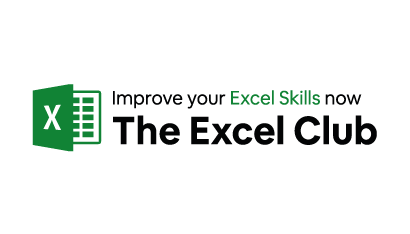What is a skills-based CV and do I need one?
Take a look at what a skills-based CV is, find out when to use a skills-based CV, and learn how to write one yourself.

CVs will vary from person to person, influenced by your industry of choice and experience among other factors. The format you choose to use is largely down to you – you can usually decide what sort of CV you should use by considering the job you’re applying for. For example, you may be in a creative profession and need to include portfolio information – knowing what to include in a CV is an art in itself.
One of the best CV formats to truly promote yourself and your talents, and make you seem like the strongest candidate for the job, is a skills-based CV. This CV format focuses on your career skills and how they can be applied to the role, making you stand out from the crowd.
But what exactly is a skills-based CV, and when should you use one? Let’s take a look at skills-based CVs and what they’re used for.
Get a FREE CV review
Receive a personalised CV review from our trusted experts in just two days.

What is a skills-based CV?
There are three main types of CV – the chronological CV, the combined CV, and the skills-based CV. A skills-based CV, otherwise known as a functional CV, primarily focuses on transferable skills and relevant aspects of your previous roles, providing your prospective employers with crucial information on your abilities and achievements.
This CV format differs from others because it puts the skills that the employers are looking for front and centre, taking priority over work experience and other elements. Focussing on essential skills in general can really help with your career development, but you should also consider the top CV skills that employers are looking for.
What are skills-based CVs used for?
While all CVs and resumes are designed to showcase your experience and suitability for a role, a skills-based CV isn’t necessarily used to highlight your previous roles and employment. Instead, you highlight what you’ve learned in those previous roles, and how those skills can be transferred to your new role.
While a chronological CV is more traditional, skills-based CVs are gaining popularity as you can tailor them to reflect job-specific skills and to focus on your key selling points. If you’re not very experienced or are looking to make a career change, it also allows you to showcase your transferable skills rather than focusing on experience.
-

 The University of Sheffield How to Succeed at: Writing ApplicationsBusiness & Management,Study Skills
The University of Sheffield How to Succeed at: Writing ApplicationsBusiness & Management,Study Skills
When should I use a skills-based CV?
We’ll start by saying that skills-based CVs aren’t necessary for everyone. If you’re looking to switch roles within the industry you’re currently working in, or you have plenty of previous relevant experience for the job you’re applying to, a traditional, chronological format CV will suffice.
There are some groups that would benefit from using a skills-based CV however. If you fall into one of the following categories, then you should consider writing a skills-based CV. Let’s take a look at when you should use a skills-based CV:
Applying as a graduate
Getting a graduate job can be tricky, but by using a skills-based CV, you can present all of the skills you learned while studying and explain how they can be transferred to the role you are applying to. You can also look at previous, non-relevant employment you might have had, and consider the transferable skills where possible.
Making a career change
If you are considering a career change, a skills-based CV can help show prospective employers your relevant and transferable skills that you learned during your previous employment. When changing careers, your previous work experience won’t always be relevant, but you’ll have plenty of transferable skills to help you.
Turning a hobby or a passion into a career
The novelist Mark Twain once said, ‘find a job you enjoy doing, and you’ll never have to work a day in your life’, which certainly rings true if you’re considering turning your side hustle or your passion into your career.
Again, it may well be a completely different industry or domain to the one you have most of your experience in, but by writing a skills-based CV, you’ll prove your enthusiasm and relevant skills to position you as the right choice for the role.
Returning to work after a career gap
Sometimes we might find ourselves in a position where we are not able to work for an extended period. If you find yourself with a career gap of over a year or you’re concerned about a ‘skills gap’, using a skills-based CV will highlight the skills you have acquired through those previous roles rather than highlight your employment timeline.
For instance, if you’re a stay-at-home parent, and are looking to re-enter the world of work, it can be tricky to know where to start. A skills-based CV will give you some direction and confidence in applying to the role.
-

 University of Leeds Presenting Your Work with Impact: Presentation Skills TrainingBusiness & Management,Psychology & Mental Health
University of Leeds Presenting Your Work with Impact: Presentation Skills TrainingBusiness & Management,Psychology & Mental Health -

 The Excel Club Excel Skills to Make an ImpressionIT & Computer Science,Business & Management
The Excel Club Excel Skills to Make an ImpressionIT & Computer Science,Business & Management -

 Accenture Digital Skills: Digital Skills for Work and LifeIT & Computer Science
Accenture Digital Skills: Digital Skills for Work and LifeIT & Computer Science
How to write a skills-based CV
Before you start writing your CV, you should go through your previous employment and pick out all the skills you believe to be transferable. Then, add to that list with some of the top skills that employers are looking for, and re-read the job ad to see what this specific employer is looking for too. Skills are often broken down into two groups – hard skills, and soft skills. Let’s look at what each entails.
Hard skills
These are more specialised abilities that a job might require you to have. They’re much easier to ‘measure’ than soft skills, as you can enhance your knowledge and understanding in these fields by taking courses and earning qualifications. Taking data analytics courses, for instance, will reward you with a certificate that is evidence of your skill in the field.
Soft skills
Soft skills are harder to ‘measure’ than hard skills as they are affiliated with cognitive abilities and thought patterns. For instance, problem solving and creativity are two key soft skills that employers look for, as is being able to work collaboratively and expressing emotional intelligence.
Once you’ve considered your skill set and put together a solid list, you can get started on writing your CV and giving it a coherent structure.
How to structure a skills-based CV
Section 1 – personal details
This is where you put your name, your address (or where you are based), your email address and your phone number. Some people like to put their LinkedIn information here, but it’s not essential. Other than these pieces of information, you don’t really need to add anything else – some people think that your birthday and nationality are essential, but they’re not necessary.
Section 2 – profile/career objective
This section isn’t the most important section, but if you are lacking in some bits of experience that an employer might be looking for, it can really boost your CV. This section is a brief introduction to who you are, a little bit about what you’ve done, and what your long term goals are. You should spend some time on this section so that you stand out from the other candidates.
Section 3 – skills
This is the most important part of your CV – after all, this section encompasses the name of this CV format. From your compiled list of skills from previous roles, try and include five or six skills related to the position you are applying to. It’s worth noting that this section will change with every application, so you will likely mention your other skills from the list in another application.
Carefully read the job description and the specifications when writing this section, and note down some of the keywords. Hiring managers often have to go through many CVs, so having words to catch their eye will make them spend longer looking at your CV.
Once you’ve selected your top CV skills, write them out and give a brief example of situations where you have successfully used these skills. These can be anything at all – from hobbies through to paid employment. For instance, if you had to do verbal presentations at university, you have proven communication skills.
Section 4 – employment history
You will have touched upon your employment history in the ‘skills’ section, but you can talk about other roles you have had, relevant or otherwise. This should be on the second page of the CV, as the emphasis is on the skills you acquired in your roles. It’s also worth mentioning any placements or internships you might have had here that could be relevant.
Section 5 – education
If your employment history isn’t very substantial, it could be worth swapping it out for the education section. Make sure to list any information that could be relevant to the role you’re applying for – for instance, any modules or courses you have taken, and the subjects and grades you were awarded. You should also include any relevant technical expertise such as CAD or SAGE.
Section 6 – interests/hobbies
While some may not think that this is an important section to have on your CV, many employers will be interested in what you do in your free time. Plus, if you have relevant interests and hobbies, employers will want to hear about them, this can lead to a successful interview process if it grabs their attention enough.
Section 7 – references
It’s good practice to put down a couple of names, job titles, and contact details for your references – of course, if you have their permission to do so. You should put ‘references available upon request’ if you aren’t including exact names here, or if you want to include additional opportunities beyond the references you’ve already included.
-

 CIPD - Chartered Institute of Personnel and Development People Management SkillsBusiness & Management,Psychology & Mental Health
CIPD - Chartered Institute of Personnel and Development People Management SkillsBusiness & Management,Psychology & Mental Health -

 University of Leeds Essential Skills for Your Career DevelopmentBusiness & Management,Psychology & Mental Health
University of Leeds Essential Skills for Your Career DevelopmentBusiness & Management,Psychology & Mental Health
Extra CV tips
So, those are all of the sections you‘ll want to cover when writing your skills-based CV. As well as covering all those points, you’ll want to make sure that the CV is no more than two pages long, and while it can be good to express some design flair, you don’t want to go too overboard.
Try to avoid any heavy graphics, blocks of colour, or complex formatting, and make sure you use internet-friendly fonts like Times New Roman or Arial. If you have any additional work or a relevant portfolio, it’s worth adding a link to this as well.
Ultimately, you want to emphasise your relevant skills for the role, so make sure that is your main focus.
Final thoughts
With so many different types of CV, it can be tricky to know which one best suits your situation. Knowing and understanding your situation and what you’re looking to achieve before putting pen to paper will help dictate which CV format you should use.
The aim of a skills-based CV is to demonstrate your skills, and how you can use them in the role you are applying to. Incorporating keywords that the employer might have mentioned in the job description and specifications in your list of skills will make you stand out.
If you’re on the hunt for a job and you’re looking for some extra help or want to boost your profile and CV, you can take a look at our top ten courses to help you find a job. You’ll learn all about the essential skills that employers are looking for, and how you can sell yourself and succeed in interviews. If you want to boost your employability and receive free personalised CV recommendations for free, check out our free CV review tool.








